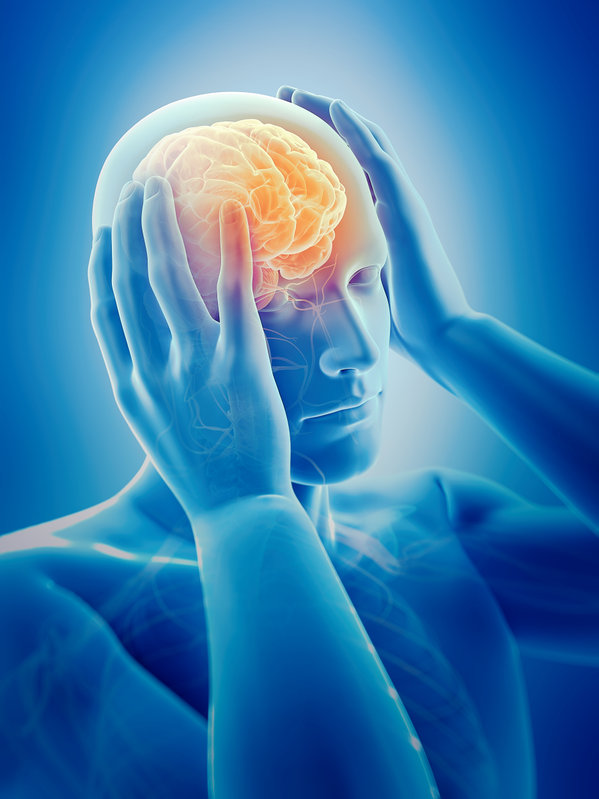In this post, we continue our discussion of primary headaches that Correctional Nurses may encounter in the correctional environment.
Migraine Headache
Migraine is one of the two most common causes of episodic and recurrent moderate to severe headache. It is a primary headache disorder whose symptoms typically last 4 to 72 hours.
Migraine headache is considered a neurovascular pain syndrome. That is, it is initiated by a neurologic event that then causes vasodilation recognized by the brain as pain. The migraine headache is described by sufferers as episodic, with moderate to severe, often throbbing, pain. It is most often unilateral, but may be bilateral, and is aggravated by physical activity. Migraines are also associated with photophobia (light sensitivity), phonophobia (sensitivity to sound), nausea and vomiting. It often resolves with sleep.
There are many potential triggers for migraine headache, including weather changes; drinking red wine; stress; sleep deprivation; skipping meals; hormonal factors, especially menses; certain foods, and excessive afferent stimulation (strong odors, flashes of light). Research has shown that fluctuating estrogen levels are strong instigators of migraine headaches. Many women start with migraine headaches when they start their menses, and report severe headache during their menstrual cycles. Migraines often will be in remission during pregnancy but will recur after childbirth; they may worsen during menopause. Oral contraceptives may increase the frequency and severity of migraine headache. If the patient experiences 15 or more migraine headaches a month, they are afflicted by chronic migraines.
The signs and symptoms of migraine headache including a prodrome and an aura. A prodrome is the feeling that the migraine is starting, and may include nausea, loss of appetite and mood changes. Auras are temporary neurologic disturbances that can affect balance, speech, sensation, vision, and muscle coordination. Auras may last for minutes to hours and may even continue after the headache begins. Most often, auras are visual, but they can affect smell as well.
Cluster Headache
Affecting primarily males between the ages of 20 and 40 years old, cluster headaches cause extreme, unilateral temporal or peri-orbital pain. They are usually episodic for one to three months, during which the patient experiences one or more attacks per day, and then the patient experiences a remission for months or even years. Sometimes, though, the patient does not experience remission. The symptoms of a cluster headache are unique. Typically, attacks occur at the same time each day, and there may be multiple attacks per day. Patients may complain of being awakened during sleep. The pain of a cluster headache is always unilateral, and quickly becomes excruciating. It most often resolves spontaneously within 15 minutes to three hours. The patient is often agitated and restless during an attack. Other symptoms include facial flushing, nasal congestion, rhinorrhea, eyelid swelling, forehead and facial sweating and watery eyes. The pain of a cluster headache is most often described as an excruciating burning or piercing pain. It starts rapidly and intensifies quickly. It is typically not associated with nausea and vomiting. Men are three times more likely to suffer from cluster headaches than women. Other risk factors associated with cluster headaches include smoking and a history of head trauma. Cluster headache triggers include smoking, temperature changes, breeze on the face and changes in emotional, mental, or physical activity. Alcohol intake during an attack period may trigger the cluster headache, but usually will not trigger a cluster headache independently.
In our next post, we will discuss Secondary Headaches.
This series of posts about Headache is based upon The Correctional Nurse Educator class entitled Headache for the Correctional Nurse.
Please share your experiences caring for patients with a complaint of headache in our comments section below.

Leave a Reply